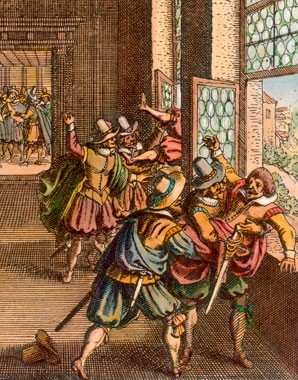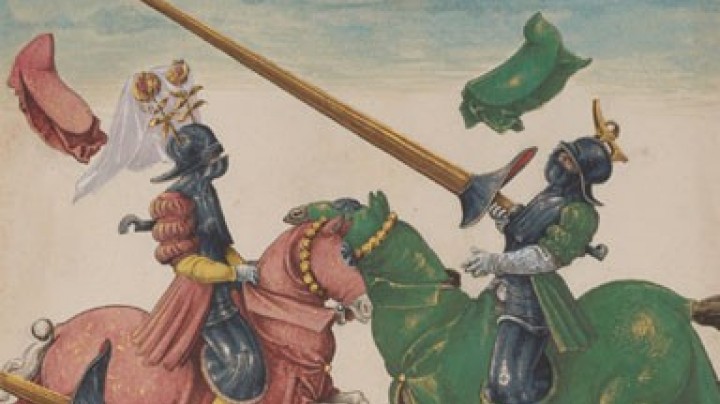Making war pay
The nobility, which had been responsible for defence in medieval times, lost its military standing and was replaced by mercenaries.
The development of the new technique of combat on foot and the deployment of infantry saw the end of the mounted knight. Large armies, armed with pikes, went into battle in compact square formations (Gevierthaufen), replacing one-to-one combat. It was no longer the individual soldier’s courage that was important but his subordination to a tactical concept in which the individual was easy to replace. The traditional view of the nobility as the ‘military profession’ had thus become obsolete. They were now replaced by enormous mercenary armies. Colonial powers such as Spain were able to recruit large armies on the strength of the revenue from their overseas colonies.
The monthly pay of a simple mercenary was about four gulden, which was more than the average craftsman earned, and almost double the wage of a farm hand. Along with members of rural and urban lower classes, it was in particular artisans, merchants and peasants who enlisted as mercenaries, as many had lost their livelihoods during the Thirty Years’ War through economic hardship and devastation. Owing to religious persecution, many of the mercenaries were Protestants, and the army also offered members of the nobility the opportunity to gain military experience and to earn their living, aristocrats not being permitted to engage in commerce.
The hierarchy of the mercenary army was clearly structured: while a foot soldier would earn four gulden a month, the regimental commander or colonel received 500 gulden.
Another incentive for enlisting in a mercenary army was the chance to share in the spoils of war. Ever since the Middle Ages, the right of capture had been part of a soldier’s life. Villages and towns along the routes of war were subjected to pillaging, and travelling merchants and traders were frequently robbed. Colonels, officers and colour bearers were also privileged in their share of the spoils.
Desertion and mutiny were frequent among mercenaries as they often received their pay late or not at all. A well-known instance of such a revolt was the sack of Rome by the mercenaries of Charles V, who had not received any money and therefore marched from Florence to Rome in 1527, without a leader, to obtain compensation for the pay they were owed. The latter incident can be regarded as a symbol of how the deployment of this new type of army, which was often difficult to control, came to predominate in warfare: its areas of operation reached from Latin America to Africa, from the Netherlands to Italy – and to be able to pay mercenaries for their services, rulers were forced to take out increasing numbers of loans.

















